The James Webb Space Telescope (JWST) is celebrating two years since its launch in December 2021. In honour of that event we are looking back at some of the fantastic images that the telescope has sent back to Earth over the past 12 months.
The telescope is the largest space observatory ever built and has already set about solving some of the Universe’s greatest mysteries.
JWST is expected to have an operational life of at least 20 years, although, like the Hubble space telescope it could conceivably be sending back images well after this time.
10. Rho Ophiuchi
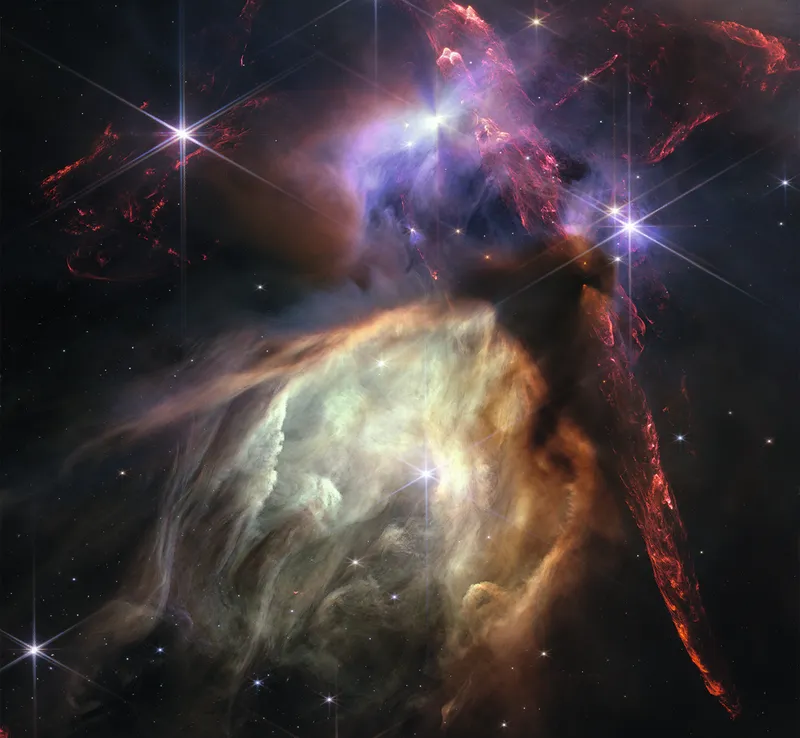
About 390 lightyears from Earth sits the Rho Ophiuchi cloud complex, a relatively small stellar nursery made up of interstellar dust and gas. This is one of the closest star-forming regions to our Solar System full of young stars that are similar in mass to our own Sun.
The red clouds that appear to surround the interstellar gas is molecular hydrogen, lit up by jets bursting from young stars. Some of these stars show a distinct circumstellar disc, indicating potential future planetary systems in the making.
The field of view of this image is actually very small, showing us just a glimpse of the whole of the Rho Ophiuchi region.
9. Cassiopeia A
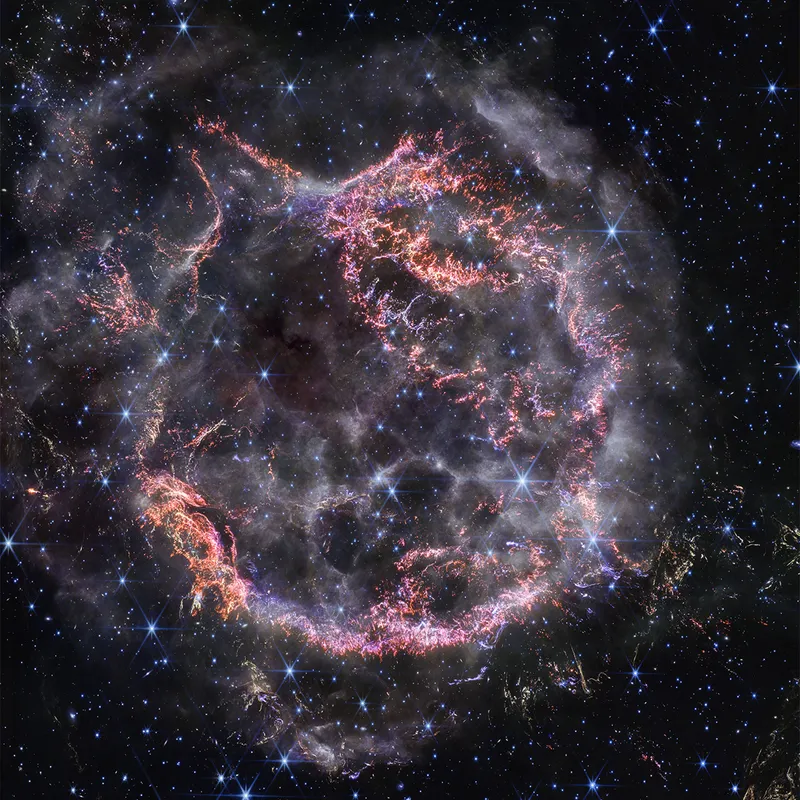
Cassiopeia A is a supernova remnant in the constellation Cassiopeia. It is the newest known remnant of a massive star explosion in our galaxy, and occurred about 340 years ago. This mid-infrared image, released in April 2023, shows a star's remains in amazing detail despite it being about 11,000 lightyears from Earth.
Images as close to us and with this level of detail can give us huge insight into how supernovae like this occur, and what kind of stars produced a supernova like this one.
8. Ancient galaxies
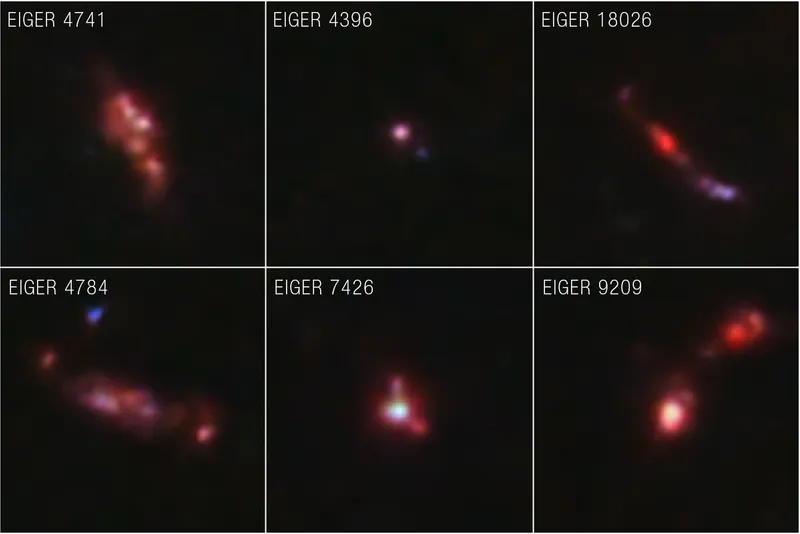
They may not look that impressive, but this combination of six images show galaxies that existed when the Universe was only 900 million years old.
These distant galaxies, found in the constellation Pisces, look more chaotic and fuzzy than those in the nearby universe – they are clumpy and often elongated.
7. Herbig-Haro 211
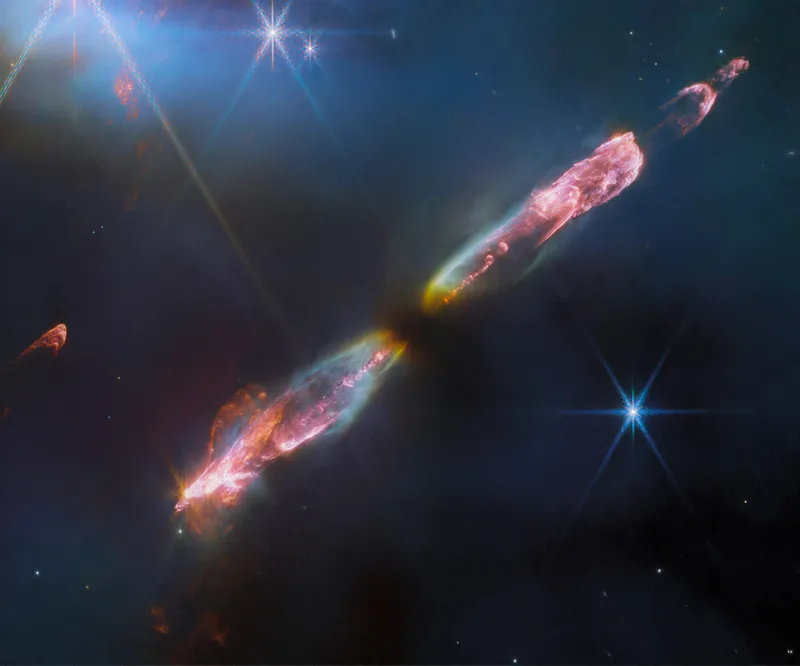
In this image, energetic jets of gas erupt from a newborn star located just 1,000 lightyears away in the constellation Perseus. As the gas shoots away from the star, it collides with other gases and produces shockwaves which can be clearly seen in this image.
These are known as Herbig-Haro objects – ionised gas clouds that are ejected by newborn stars. Herbig-Haro objects can last for tens of thousands of years, but that is a blink of an eye when compared to the millions of years it will take for stars to fully form.
6. Saturn's rings
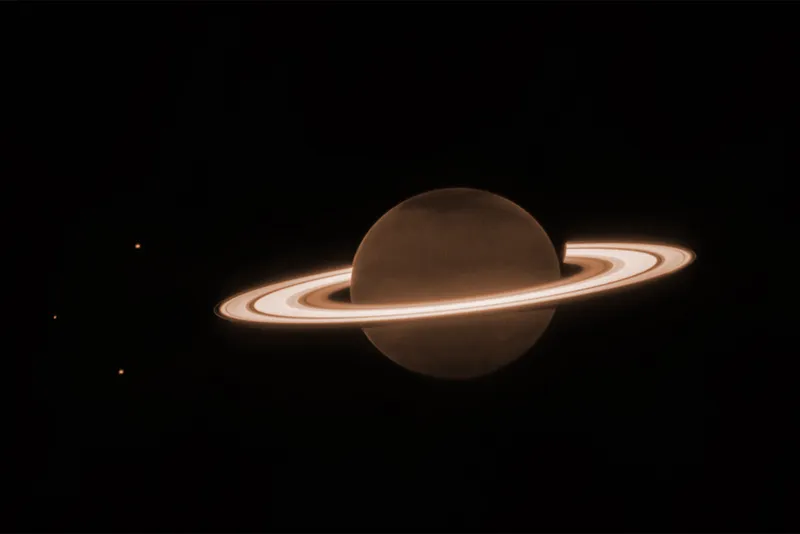
JWST doesn't just look deep into space, it also studies objects a lot closer to home. One such example is this amazing image of Saturn, taken in June 2023. In this image, the planet itself looks quite dark – this is due to the near-infrared camera that the telescope used to take this image.
Sunlight is absorbed by the planet's methane gas and hydrogen atmosphere when imaged at this wavelength, making Saturn's surface seem quite dark while allowing the icy rings around it to appear bright in comparison.
We can also see three of Saturn's moons to the left of the planet itself, which are (top to bottom) Dione, Enceladus and Tethys.
5. Protostars
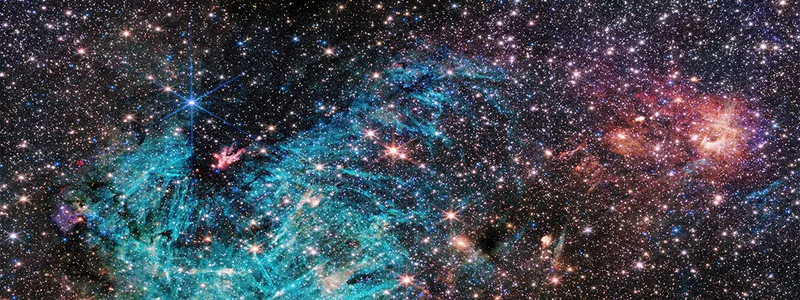
Protostars are young gas giants that gather mass from huge molecular clouds. At the heart of this cluster, you can see a protostar 30 times the mass of our Sun – that’s almost 10 million the mass of Earth.
The region photographed is actually much busier than it looks – the cloud is so dense that light from stars behind it cannot reach the Webb telescope, and so they do not appear in this image.
4. The crab nebula
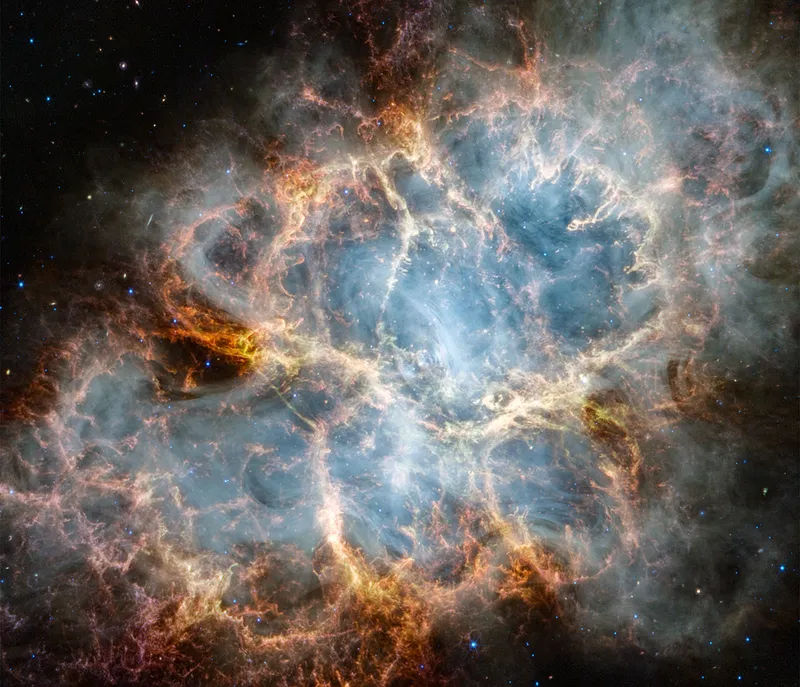
The Crab Nebula is a supernova remnant located 6,500 lightyears away from Earth, in the constellation Taurus. This detailed image shows how the supernova remnant is comprised, featuring elements such as sulphur (represented in red-orange) and iron (blue).
One of the most interesting aspects of this image is the white wispy clouds that seem to fill the whole nebula. This is what is known as synchrotron radiation, which occurs when charged particles (such as electrons) move through magnetic fields.
3. Arp 220
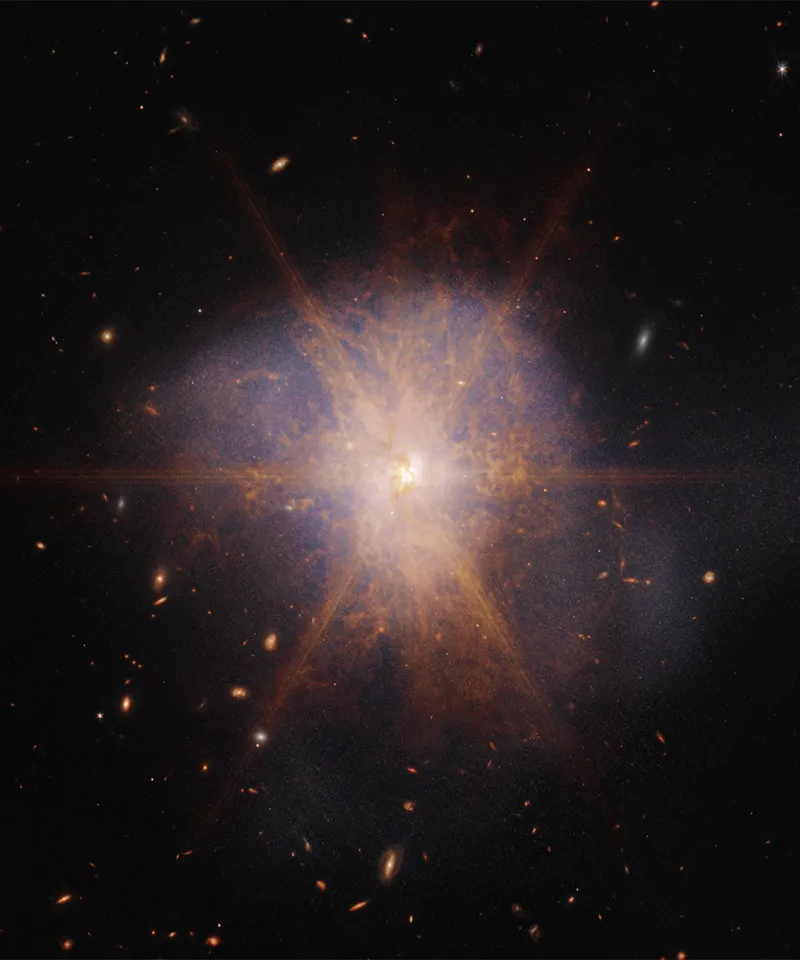
Two spiral galaxies in the process of integrating, Arp 220 is 250 million lightyears away in the constellation known as the Serpent, and is the brightest galactic merger we can see from Earth.
This collision started about 700 million years ago and shows up brightest in infrared light, making it an ideal target for Webb's special infrared camera. It is an ultra-luminous infrared galaxy (ULIRG) with a luminosity of more than a trillion suns. In comparison, our Milky Way galaxy has a much more modest luminosity of about ten billion suns.
Incredibly about 200 huge star clusters are located within this region, which is about 5,000 lightyears in diameter. The amount of gas in this tiny region is equal to all of the gas in the entire Milky Way galaxy.
2. Herbig-Haro 46/47
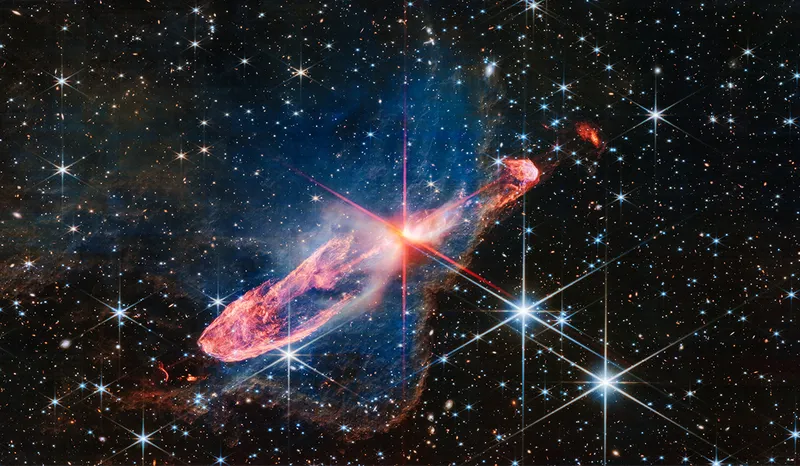
Herbig–Haro (abbreviated to HH) objects are bright clouds of hydrogen and cosmic dust, usually associated with star-forming regions of space. As more and more gas and dust come together in such areas, the concentration of these materials can become dense enough to form stars.
Herbig-Haro 46/47 is an important object for astronomers to study because it is quite a new object, and it isn't far away either – less than 1,500 lightyears. Because stars take millions of years to fully form, studying HH objects like this one can give clues as to how stars gather mass over time.
In this image, the two-sided orange lobes we can see from left to right were created by earlier ejections from stars. By contrast, more recent ejections appear in the blue areas of the image.
Look a little deeper...
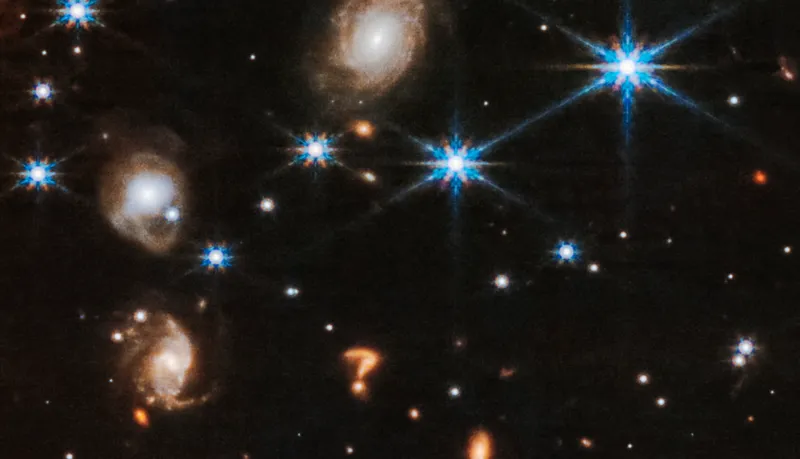
If we look a little deeper at the image, we can see a curious question mark buried deep in space. Although this is a chance combination of a nebula or a star, it is quite fun to think of it as some kind of hidden message or cosmic joke.
1. Ring nebula
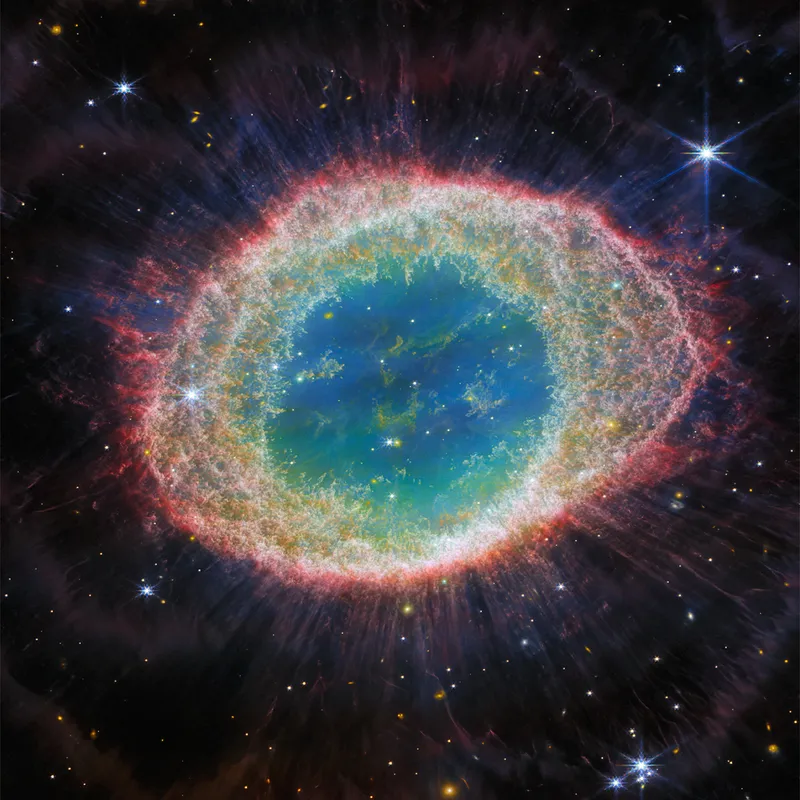
Located in the constellation Lyra (Also known as M57), the Ring Nebula is a huge cloud of gas being expelled by a star that is running out of fuel, and is in the process of turning into a white dwarf.
This planetary nebula is quite close to Earth at roughly 2,500 lightyears away, and by using the powerful optics of the James Webb Space Telescope we are able to view it in incredible detail.
The pink outer layer of the nebula is caused by hydrogen emissions, and the blue area in the centre of the image is doubly-ionised oxygen emissions.
Read more:
